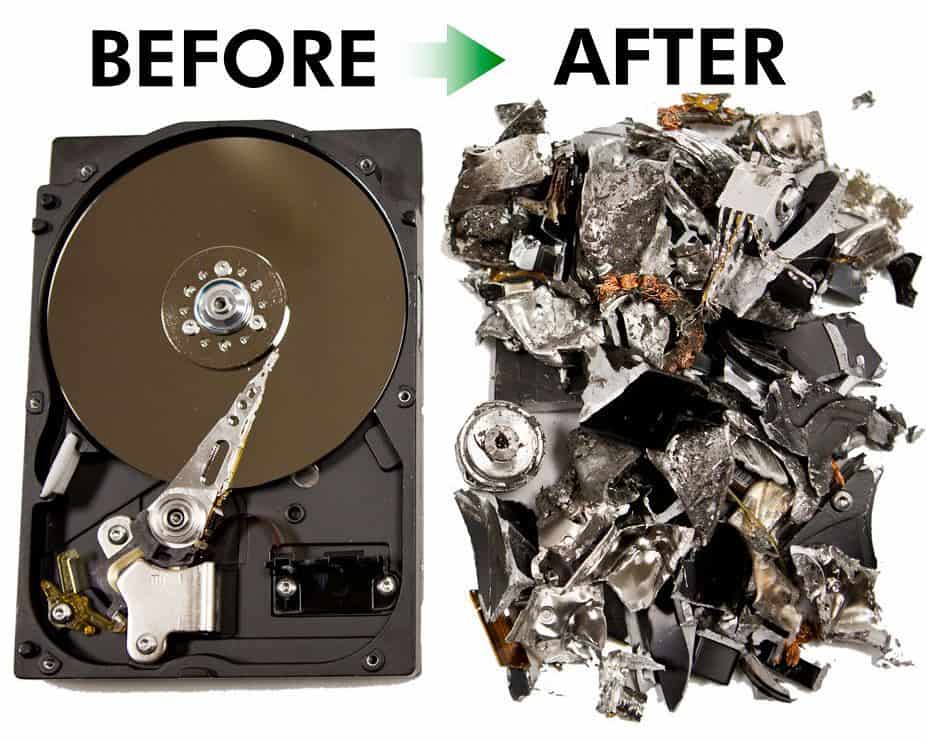How to Integrate Data Destruction Techniques right into Your Cyber Security Approach
How to Integrate Data Destruction Techniques right into Your Cyber Security Approach
Blog Article
The Relevance of Effective Information Devastation Practices in Shielding Sensitive Information and Ensuring Computer Security
In an era where information breaches are significantly usual, the importance of reliable information destruction practices can not be overemphasized. Organizations face considerable dangers when sensitive details is improperly thrown away, potentially causing unauthorized gain access to and serious monetary effects. Implementing durable data damage techniques not only mitigates these dangers however likewise aligns with lawful compliance demands, making sure that companies support their reputation and foster client depend on. The inquiry stays: what certain techniques can be used to improve these practices, and how can companies effectively integrate them into their general cybersecurity framework?
Comprehending Data Devastation
Understanding data devastation is important in today's digital landscape, where sensitive details can easily be jeopardized. Reliable information devastation involves not simply making certain but removing files that data is irretrievable via detailed techniques. This procedure is vital for companies that deal with confidential client information, copyright, or internal documents, as any kind of breach can lead to severe financial and reputational repercussions.
Information destruction incorporates numerous methods, consisting of shredding physical media, degaussing magnetic storage tools, and utilizing software-based remedies that overwrite data numerous times. Each method offers a certain purpose and has to line up with the level of sensitivity of the info being thrown away. Physical destruction is usually liked for hard drives consisting of extremely personal information, while software methods may be sufficient for much less sensitive information.
In addition, adhering to sector criteria and regulations, such as the General Information Security Regulation (GDPR) or the Wellness Insurance Transportability and Accountability Act (HIPAA), is imperative for compliance and to minimize legal risks. Organizations has to develop a durable data devastation policy, train staff members on best techniques, and regularly examine their treatments to ensure that all sensitive details is dealt with firmly and effectively.
Threats of Inadequate Practices
Insufficient information destruction methods reveal organizations to significant threats that can have far-reaching effects. When sensitive info is not correctly gotten rid of, it continues to be vulnerable to unapproved accessibility, which can cause data breaches and identification burglary. Such incidents not just compromise the security of people yet likewise tarnish the company's credibility, resulting in a loss of client depend on and potential monetary effects.
In addition, regulative compliance is significantly rigorous in lots of markets. Failure to stick to information devastation policies can lead to hefty penalties and lawful activities against organizations. These fines can stress funds and divert focus from core company procedures.
Furthermore, the misuse of residual data can bring about intellectual property burglary or corporate espionage, endangering affordable advantages (data destruction). The influence of poor information damage expands past instant monetary losses; it can likewise cause lasting damages to brand name honesty and market placement

Organizations must recognize that data security is not exclusively concerning preventing breaches; it additionally includes the accountable management of information throughout its lifecycle. Neglecting effective information devastation protocols can have disastrous implications, emphasizing the need for robust actions to minimize these risks.
Ideal Practices for Information Damage
Executing efficient information devastation methods is necessary for guarding sensitive info and keeping compliance with regulatory requirements. Organizations needs to embrace a multi-faceted technique to make certain that information is irretrievable, thereby avoiding unapproved gain access to and possible breaches.
First, data need to be classified based upon sensitivity, permitting organizations to use suitable destruction techniques tailored to the level of risk. For digital information, making use of software-based data-wiping devices that adhere to sector requirements can efficiently overwrite existing data. Physical devastation approaches, such as shredding or degaussing, are vital for gadgets that store delicate information, making certain full elimination.
Establishing a clear data retention policy is vital, outlining the length of time different sorts of information must be kept before damage. Normal audits of information storage space systems are likewise needed to recognize outdated or unnecessary data requiring elimination.
Furthermore, training employees on the relevance of data devastation and the particular protocols to comply with fosters a society of Learn More Here protection within the company. Keeping documentation of data devastation processes provides liability and supports conformity with inner plans and external guidelines. By adhering to these finest methods, organizations can substantially mitigate the dangers connected with information exposure.
Legal and Compliance Factors To Consider

Failure to adhere to these regulations can lead to extreme fines, consisting of considerable fines and reputational damages. Organizations has to apply a durable data devastation policy that straightens with these lawful structures and supplies clear guidelines on the appropriate methods of data i loved this disposal, whether physical shredding or digital wiping.
Moreover, maintaining documentation of information damage activities is vital for showing compliance during audits or assessments. By prioritizing lawful and compliance factors to consider, organizations can enhance their data protection posture and foster trust with customers and stakeholders, eventually adding to an extra secure information monitoring setting.
Advantages of Effective Data Damage
Reliable data devastation practices prolong past plain compliance; they provide significant advantages to organizations that prioritize them. By making sure that delicate information is irretrievably damaged, companies mitigate the threat of information breaches and the prospective monetary effects associated with them. This positive technique not only safeguards versus unapproved accessibility but additionally boosts the overall dependability of the company in the eyes of customers and stakeholders.
Applying robust information destruction approaches, such as physical destruction of storage gadgets or advanced data cleaning strategies, adds to the conditioning of i was reading this an organization's cybersecurity stance. data destruction. It reduces the likelihood of copyright burglary and secures exclusive information, thus keeping an affordable side out there

Final Thought
In final thought, efficient information destruction methods are vital for safeguarding delicate details and improving total computer system safety. By executing extensive methods such as degaussing, shredding, and software overwriting, companies can minimize the threats associated with unauthorized accessibility and information breaches. Adherence to regulatory standards, consisting of GDPR and HIPAA, more strengthens conformity and shields against legal effects. Eventually, a commitment to durable information damage approaches fosters a society of duty, thus strengthening an organization's cybersecurity pose and keeping client count on.

Report this page